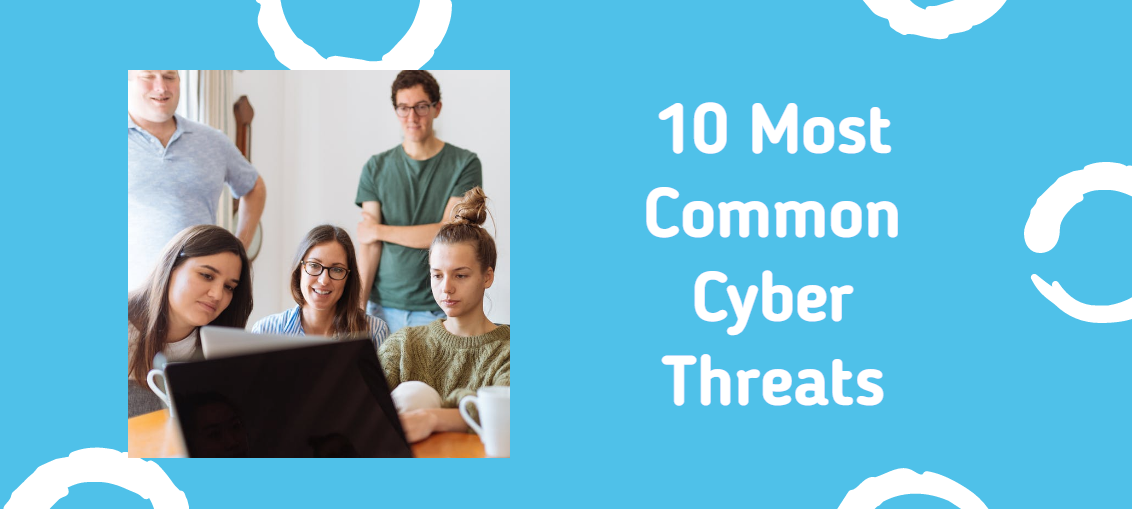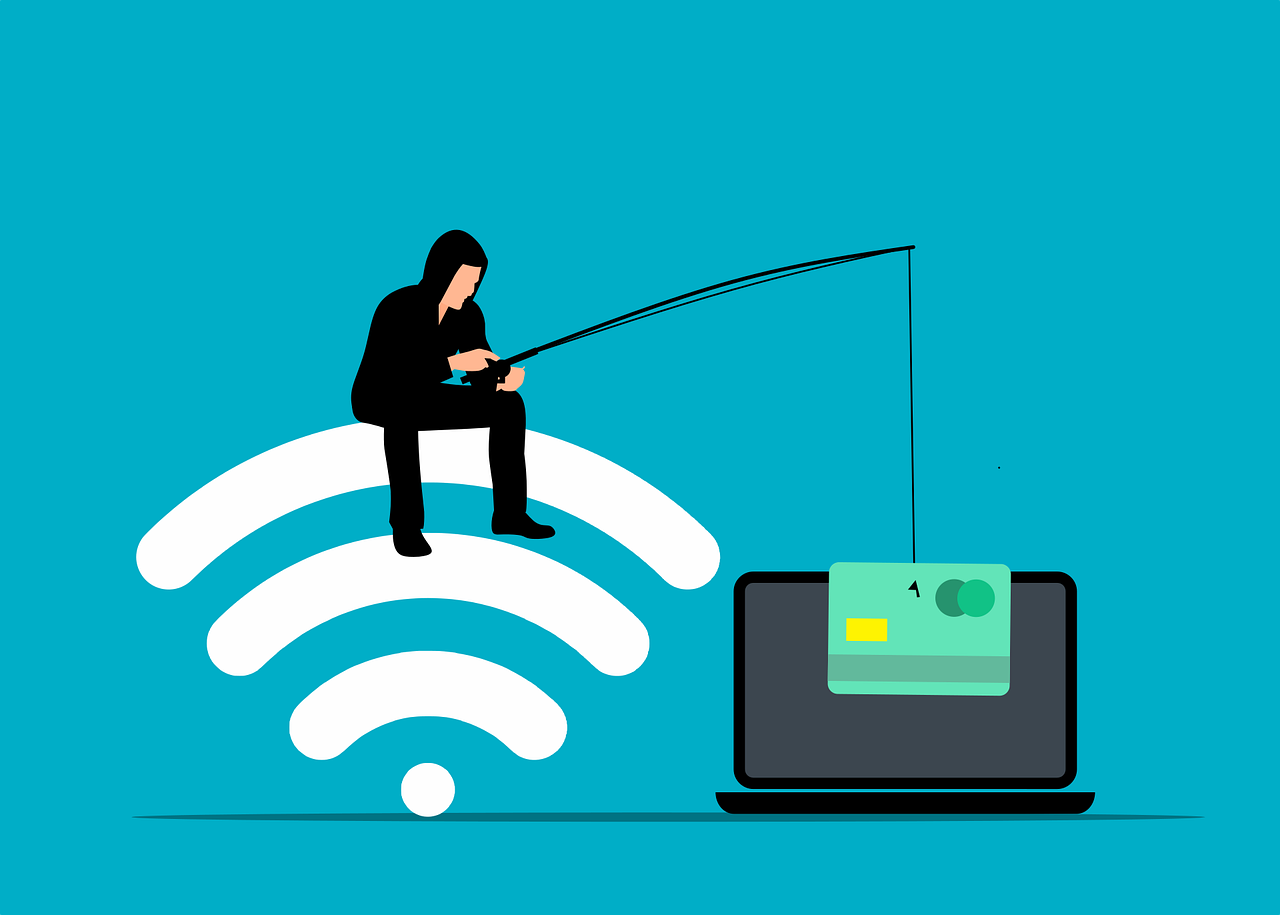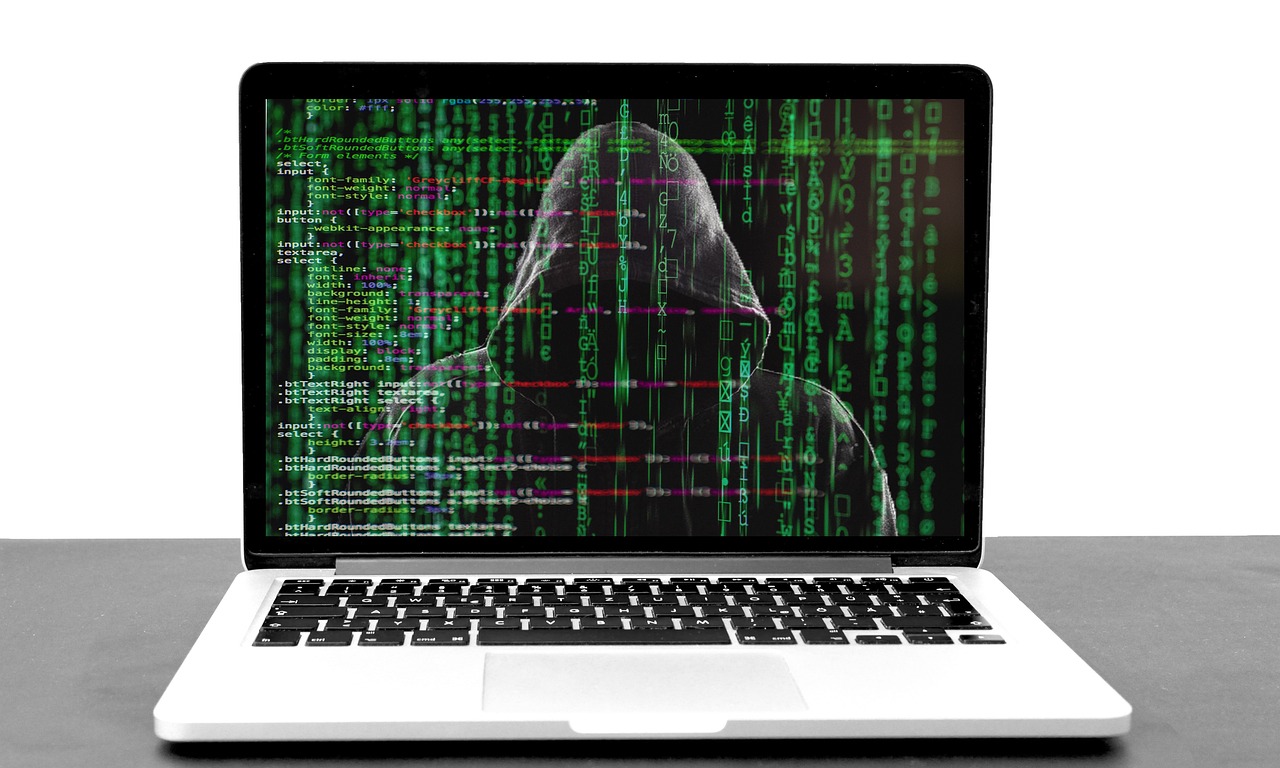This post will show you the 10 most common cyber threats.
The usage of the internet has become a widespread phenomenon in recent times. Though the benefits of the internet are countless, it has also brought along many problems with itself. Among many other issues with internet usage, the most common problem is the constant cyber threats that individuals and businesses face.
A well-designed cyber-attack can crumble the entire infrastructure of a business. It can badly impact the business’s reputation and operations.
These threats affect businesses and individuals and can ruin your computer system. This is why it is essential for anyone who uses the internet to have knowledge of common cyber threats and how to avoid them.
Here are the ten most common cyber threats that are prevalent today.
Table of Contents
10 Most Common Cyber Threats
Malware
Malware stands for “malicious software”. It is one of the most common attacks affecting users. A malware attack occurs when cyber attackers create harmful software to infect its target systems.
When the user visits a particular website, opens a malware-infected file, or clicks a link, the malware gets installed into their system. It can then be used for hacking into a database, causing a privacy breach, or gathering critical business information.
Malware can be of different types, and the most common are viruses, ransomware, spyware, worms, and Trojan horses. The key to protecting yourself against malware is never downloading suspicious files and regularly installing an anti-malware program into your system.
Phishing Attacks
Phishing attacks are the second most common type of cyber-attacks. Also known as a phishing scam, it works by putting bait for the user and infecting their system. A scammer sends a link, usually via email, and tricks the user into clicking the link. Once the user clicks on a phishing link, their system gets compromised.
Spear phishing is a specific phishing scam where the user studies their victim before targeting them and sends them personalized messages that seem to be from relevant and trusted sources. It is for this reason that spear-phishing attacks are usually very successful.
The best way to avoid phishing attacks is to educate your employees about different phishing techniques and how to recognize them. They should know the best practices of staying vigilant before opening an email. Always hover over the link to check the URL before trying to open it.
READ ALSO: 6 Most Common Web Security Vulnerabilities (And How To Tackle Them)
Eavesdropping Attack
Eavesdropping attacks are exactly what they sound like. In an eavesdropping attack, the attacker spies on the system’s traffic to get access to sensitive information like passwords and credit card numbers. There are two types of eavesdropping attacks.
In Passive eavesdropping, the hacker gets useful information by acquiring data from a system’s network. In active eavesdropping, a hacker disguises themself as a relevant person and extracts essential information.
Data encryption is one of the most important ways to protect yourself from an eavesdropping attack.
SQL Injections
SQL injections are carried out on systems that use SQL databases. An SQL database is typically coding statements implemented to HTML form through a webpage.
An SQL injection works by inserting commands inside the code and modifying it to run various operations that may not necessarily be in the business’s best interest.
By getting complete control, the hacker can dictate how the system will operate according to them. Hence, a successful SQL injection can result in devastating results for a business.
Use strong codes and strengthen your database’s permission model to protect your system from SQL injection attacks.
READ ALSO: Cyber Threats: How to Secure your Computer against Cyber Threats
Denial of Service (DoS) and Distributed Denial of Service (DDoS) Attacks
These attacks aim to flood the network with irregular traffic to the extent that it stops providing any service.
It does not end here; instead, when the victim is looking for a way to come out of the issue, the cyber attacker takes control of other systems to get access to confidential data or the company’s financial accounts.
Even if gaining information access is not the attacker’s motive, a DoS attack can severely blow an organization’s reputation and cause severe financial losses when its service goes down. To prevent this threat, it’s imperative to deploy an effective DDoS monitoring tool.
Brute-Force Attack
As the name suggests, in a brute-force attack, cybercriminals access a user’s system by force.
They use different password combinations to gain a system’s access. Password combinations are derived by using the victim’s date of birth, hobbies, job, workplace, or any other words they can use as their password.
Organizations must implement a lockout policy to prevent a brute-force attack. This means that after several unsuccessful user attempts, the system locks the account temporarily and only reopens after a specific time when accessed by the actual owner.
Artificial Intelligence Attack
The increased usage of artificial intelligence technology in digital marketing also has a downside.
This type of cyber-attack uses sophisticated machinery to gain access to a system and exploit vulnerabilities in the system.
READ ALSO: 10 Most Secure Operating Systems (#9 Is Our Favourite)
Man-in-the-Middle (MitM) Attacks
A Man-in-the-Middle attack occurs when an attacker quietly places themselves between a server and a client.
MitM attacks can take place in many ways, the most common of which are IP Spoofing, Hijacking, and Replay. The hacker or the middleman intercepts the connection between two parties and communicates with them from both ends, making them believe that they are communicating.
While pretending to be a trusted source, hackers can extract confidential information from the other party or communicate misinformation.
Cross-Site Scripting
A cross-site scripting or XXS attack works similar to SQL injections but instead of extracting data from the database, they infect the person visiting the domain.
These attacks aim to extract customer’s information, such as bank or credit card details, and cause damage to customer loyalty and business reputation in the long run.
Cryptojacking
Cryptocurrency is now an acceptable way of carrying out financial transactions for many. Cryptojacking, also known as malicious crypto mining, is an emerging threat in which a hacker uses a victim’s mobile device or computer’s resources to “mine” cryptocurrency without their knowledge or consent.
Instead of using dedicated servers for mining, they use other systems’ resources to mine currency, slowing down the victim’s device.
It’s not easy to determine whether your device is under a crypto-jacking attack. The best way to prevent it from happening is to block JavaScript in your browser when you don’t require its functionality. Likewise, you can use programs like Miner Block or No Coin to block any mining activity in common browsers.
READ ALSO: What Are Phishing Scams And How You Can Avoid Them?
Navigating the Digital Landscape: FAQs About Common Cyber Threats
The ever-evolving world of cybersecurity comes with a constant barrage of threats. Here are some FAQs to help you understand the most common dangers lurking online:
What are the most common cyber threats?
Several cyber threats plague individuals and organizations alike. Here are some of the most widespread:
- Phishing: Deceptive emails or messages designed to trick you into revealing personal information, clicking on malicious links, or downloading malware.
- Malware: Malicious software that can infect your device, steal data, disrupt operations, or hold your information hostage (ransomware).
- Social Engineering: Manipulation tactics used to trick you into compromising security measures or granting access to systems or data.
- Denial-of-Service (DoS) Attacks: Overwhelming a website or server with traffic to render it inaccessible to legitimate users.
- Password Attacks: Techniques to guess or crack your passwords, allowing unauthorized access to accounts.
- Man-in-the-Middle Attacks: Intercepting communication between your device and another source (e.g., Wi-Fi network) to steal data.
- Zero-Day Attacks: Exploiting previously unknown vulnerabilities in software before a patch is available.
What is the #1 cybersecurity threat today?
Identifying a single “number one” threat is challenging as the landscape keeps shifting. Phishing and social engineering remain prevalent due to their effectiveness in exploiting human vulnerabilities. Ransomware attacks are also a primary concern, causing significant disruption and financial losses.
What can I do to protect myself?
Here are some essential cybersecurity practices to safeguard yourself:
- Be cautious with emails and links: Don't click on suspicious links or attachments; be wary of unsolicited emails, even if they appear to come from legitimate sources.
- Use strong, unique passwords and enable two-factor authentication (2FA) for added security.
- Keep your software updated: Regularly update your operating system, web browser, and other applications to patch security vulnerabilities.
- Be mindful of public Wi-Fi: Avoid accessing sensitive information on unsecured networks.
- Back up your data: Regularly back up your important files to a separate storage device in case of a cyberattack or failure.
- Be selective about what information you share online: Limit the personal information you share on social media and other public platforms.
Understanding these common threats and taking steps to protect yourself can significantly reduce your risk of falling victim to a cyberattack.
Conclusion
In an online threat landscape that is progressively changing daily, it’s a full-time job to stay safe from the latest menaces.
It’s always a good choice for businesses to invest in a complete cybersecurity solution that can save them from potential attacks, protect against more significant financial losses, and ensure that your computer resources are yours alone.
SUGGESTED READINGS
- How To Secure And Protect A Website [We Asked 38 Experts]
- Exclusive Interview With Dan Fusco, CEO of InnerPC
- 7 Cybersecurity Trends to Follow in 2020
- How To Prevent A DDoS Attack On Your WordPress Site
- 5 Most Common WordPress Attacks in 2020
- 5 Common Online Scam Tactics
About the Author:
Daniel Segun is the Founder and CEO of SecureBlitz Cybersecurity Media, with a background in Computer Science and Digital Marketing. When not writing, he's probably busy designing graphics or developing websites.
Meet Angela Daniel, an esteemed cybersecurity expert and the Associate Editor at SecureBlitz. With a profound understanding of the digital security landscape, Angela is dedicated to sharing her wealth of knowledge with readers. Her insightful articles delve into the intricacies of cybersecurity, offering a beacon of understanding in the ever-evolving realm of online safety.
Angela's expertise is grounded in a passion for staying at the forefront of emerging threats and protective measures. Her commitment to empowering individuals and organizations with the tools and insights to safeguard their digital presence is unwavering.








